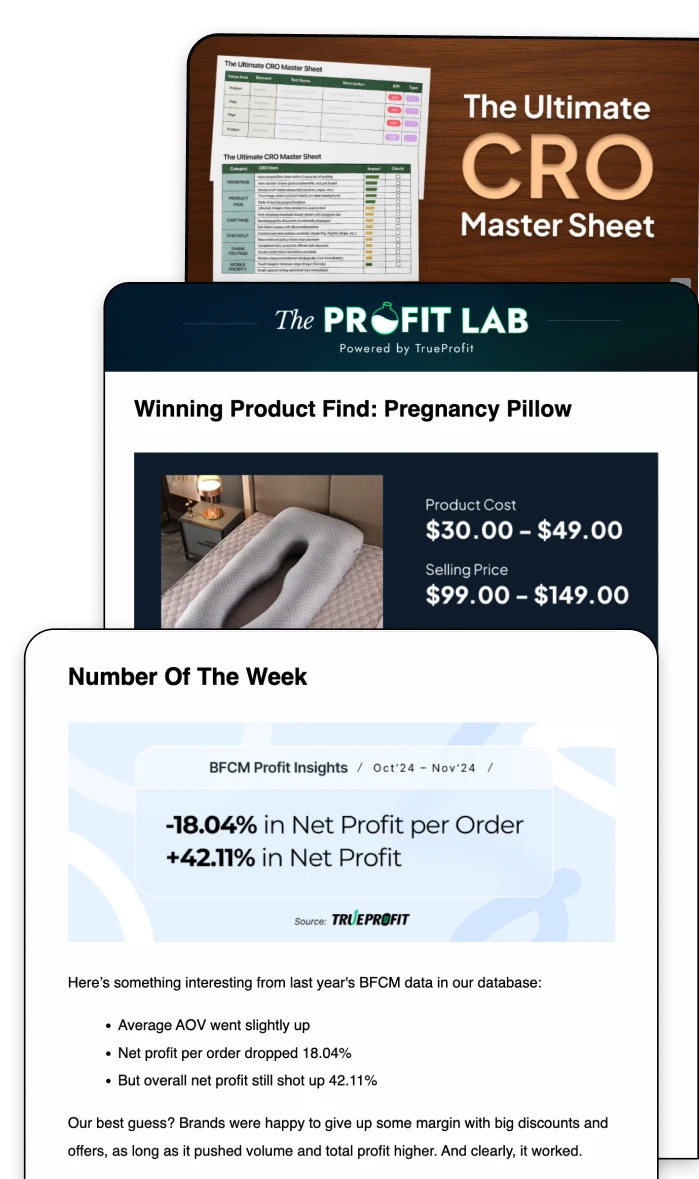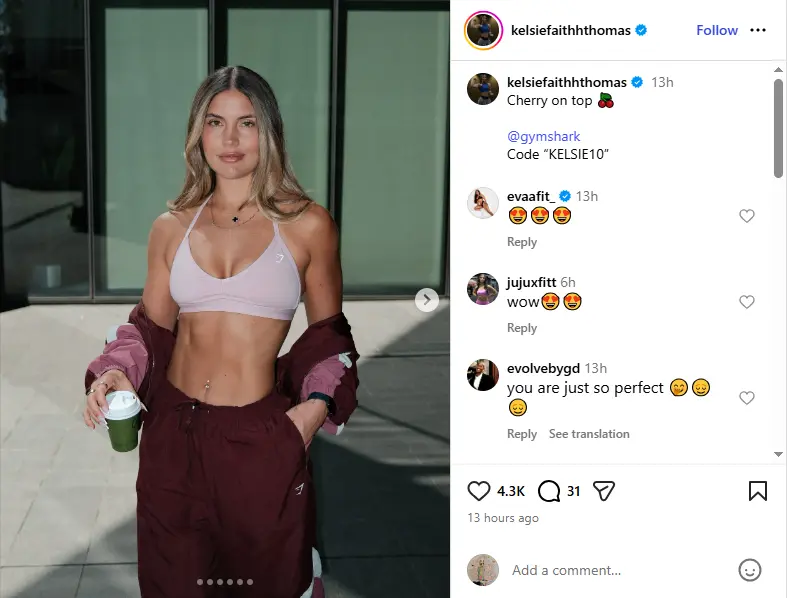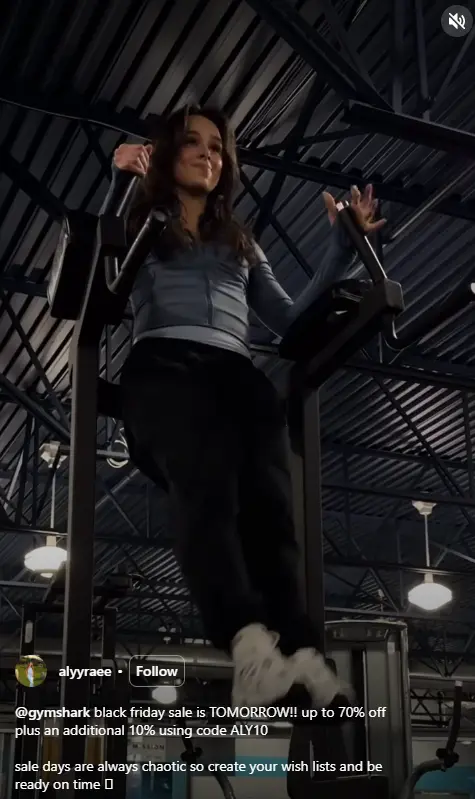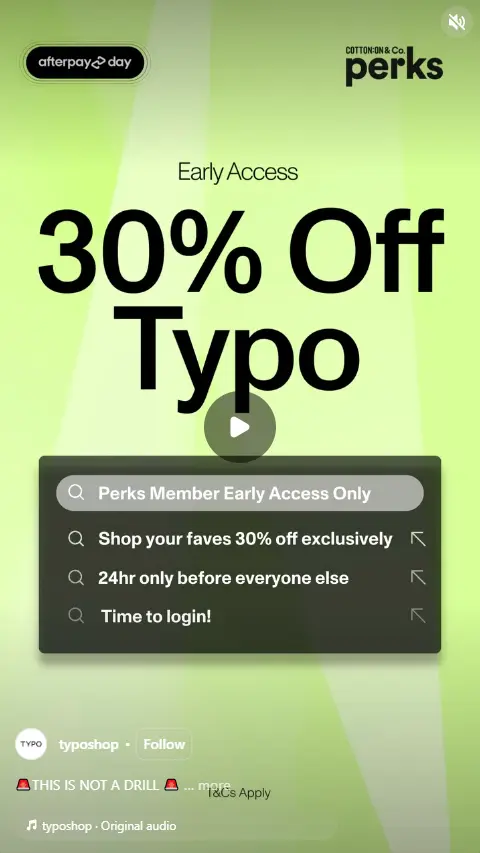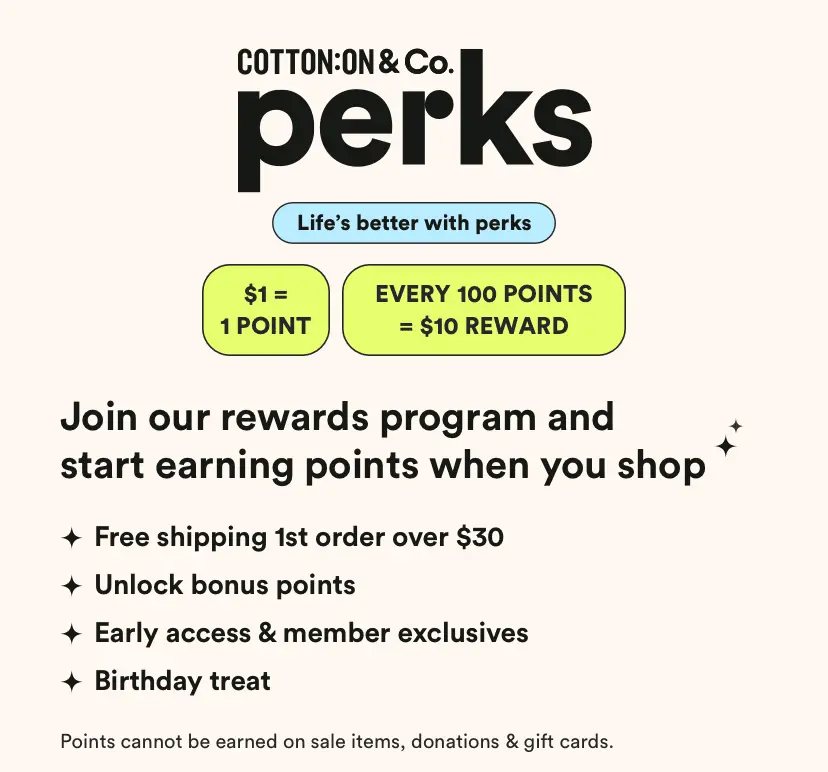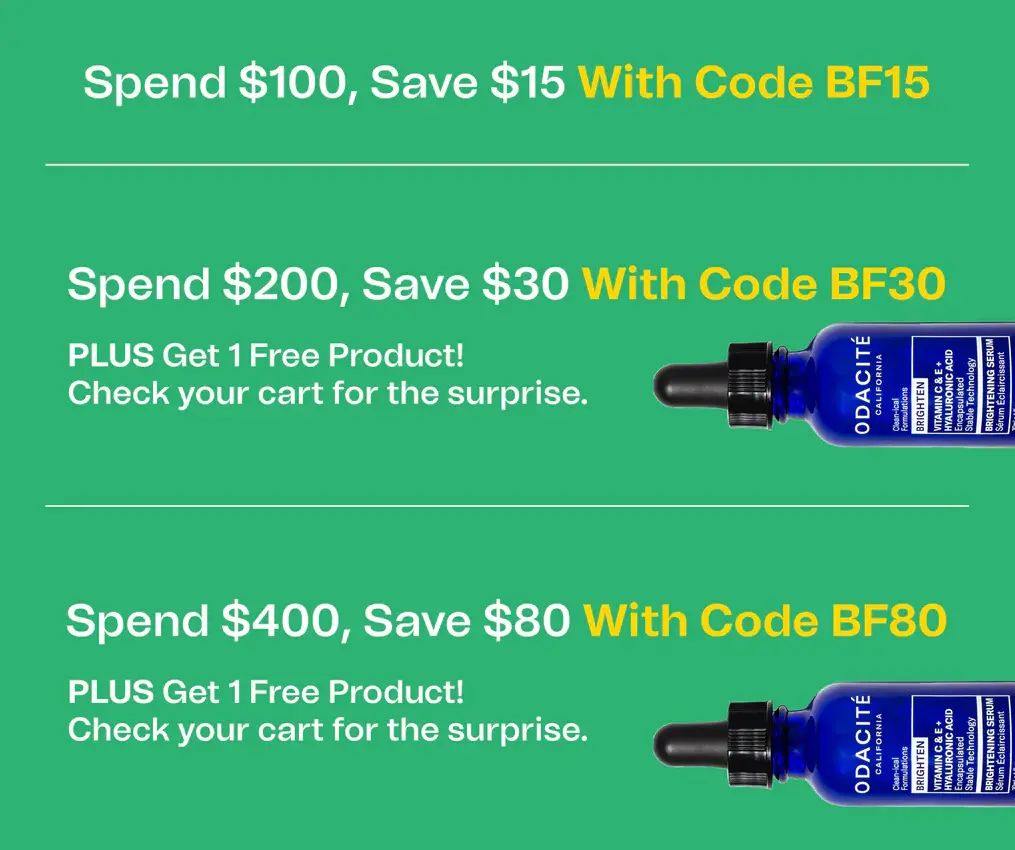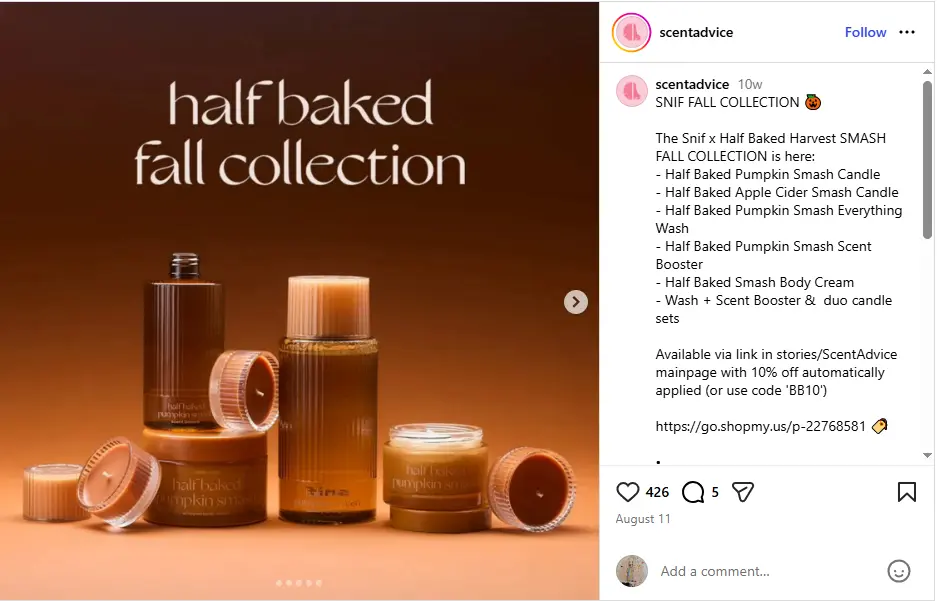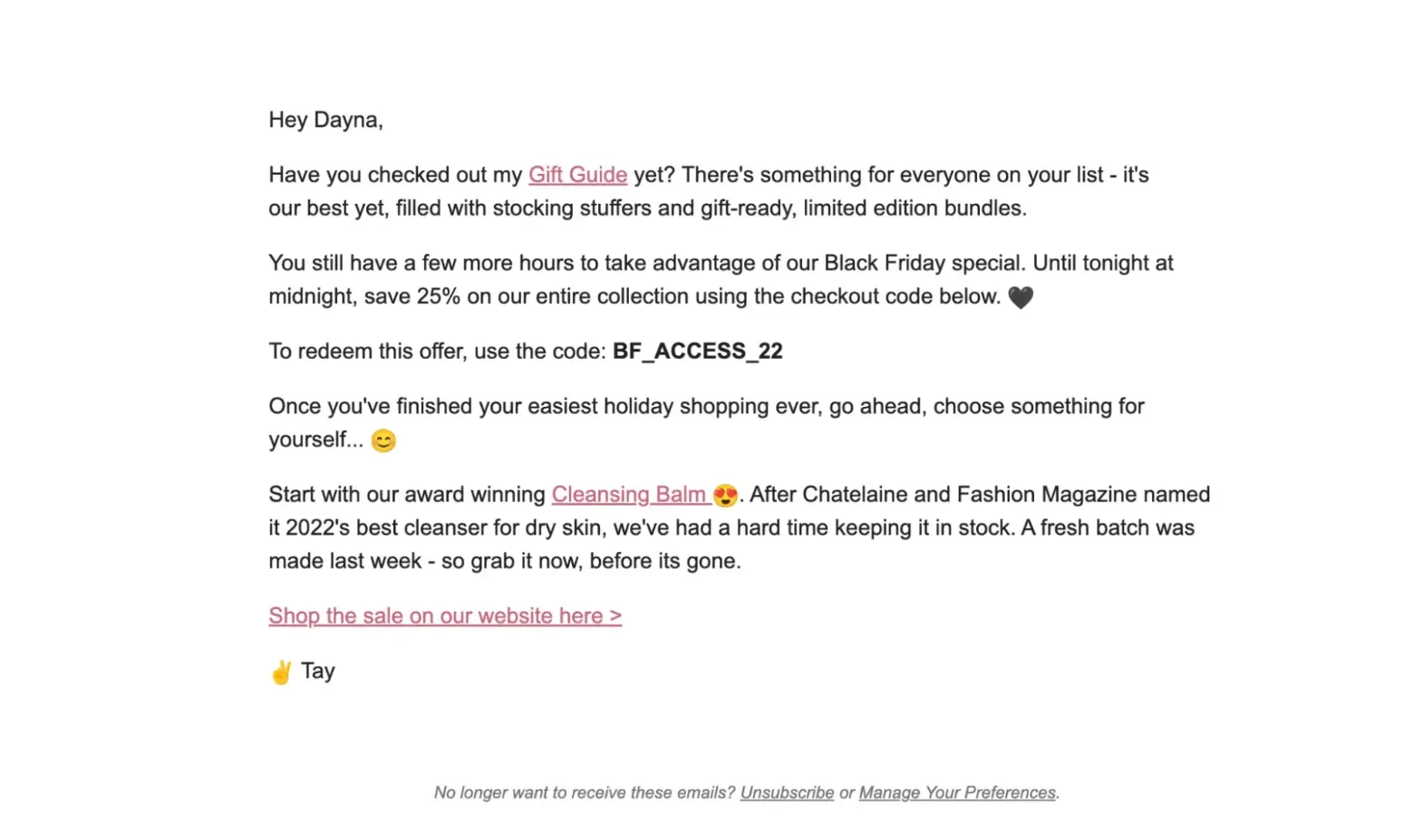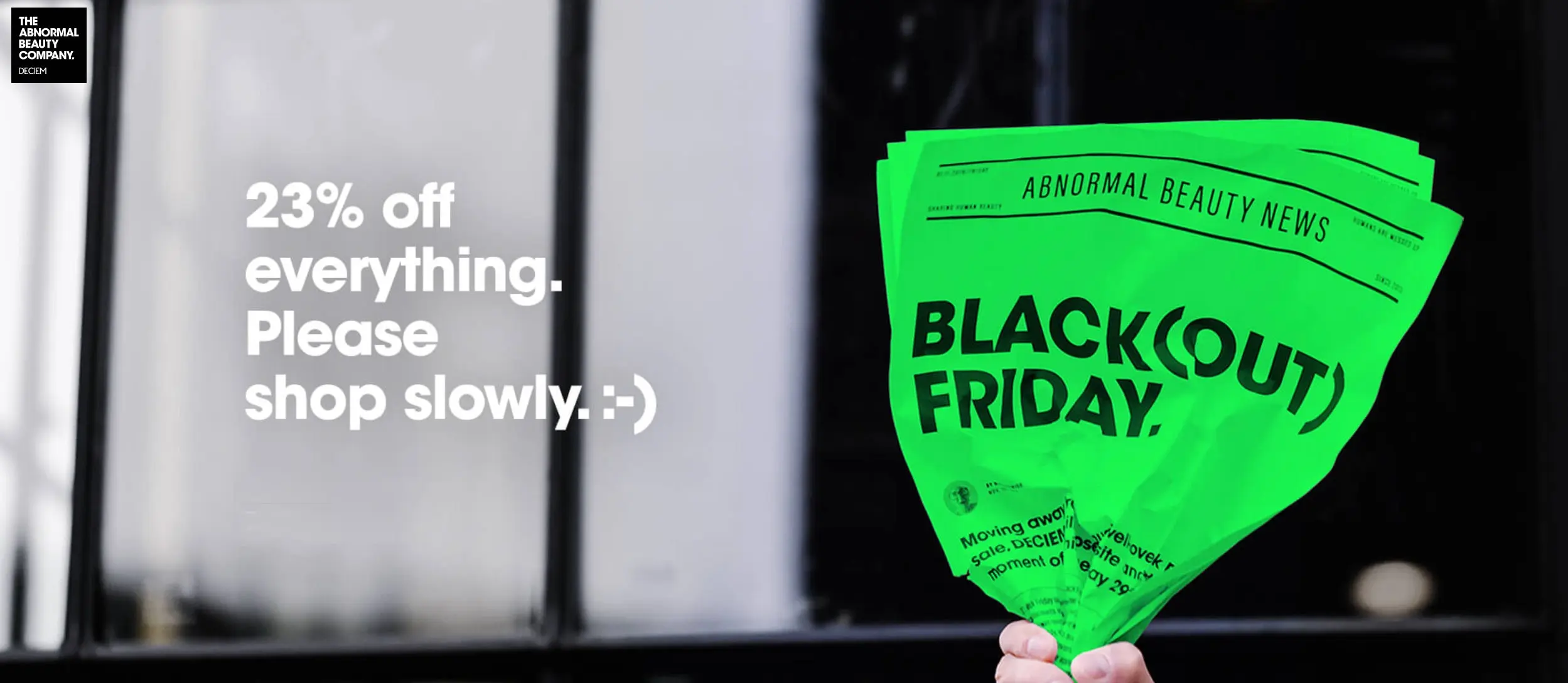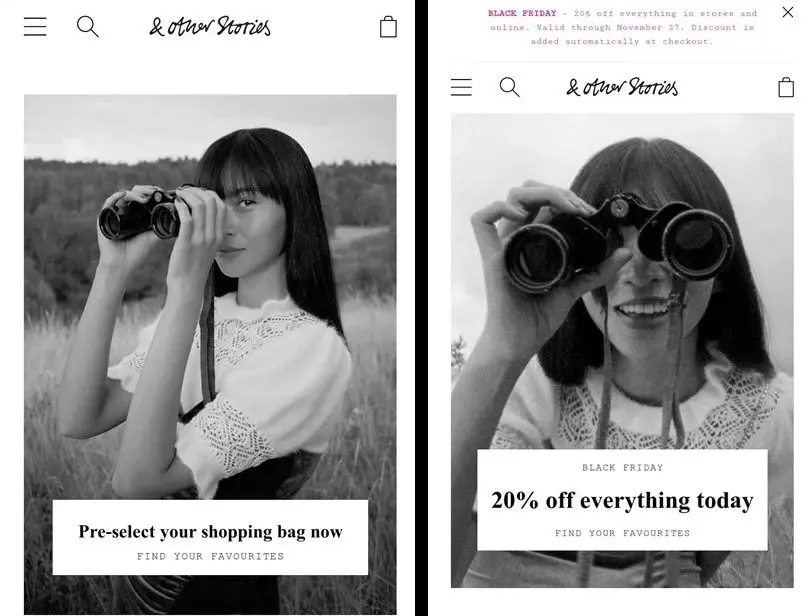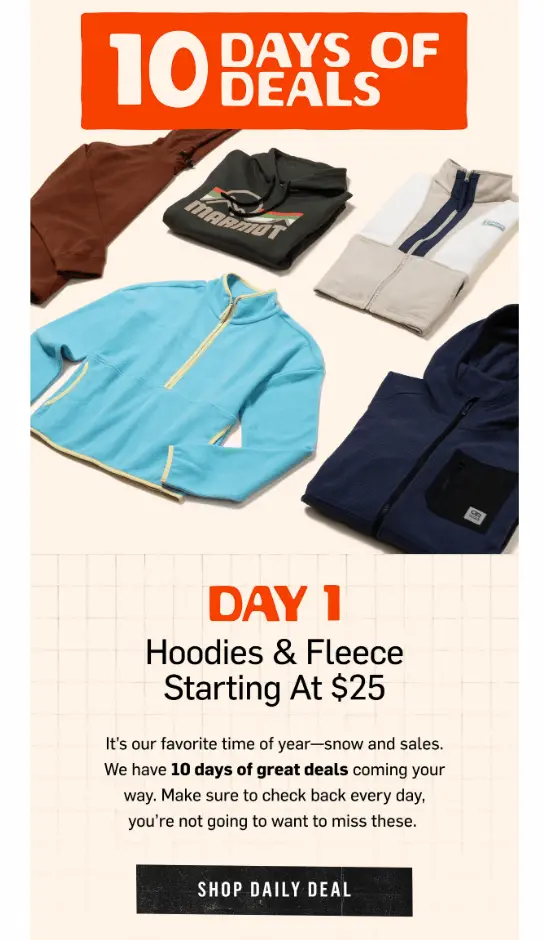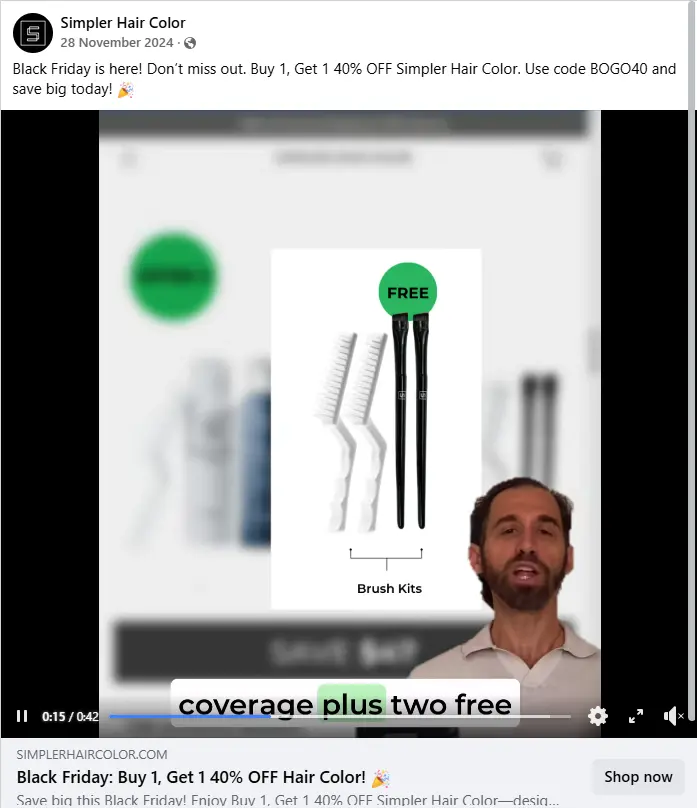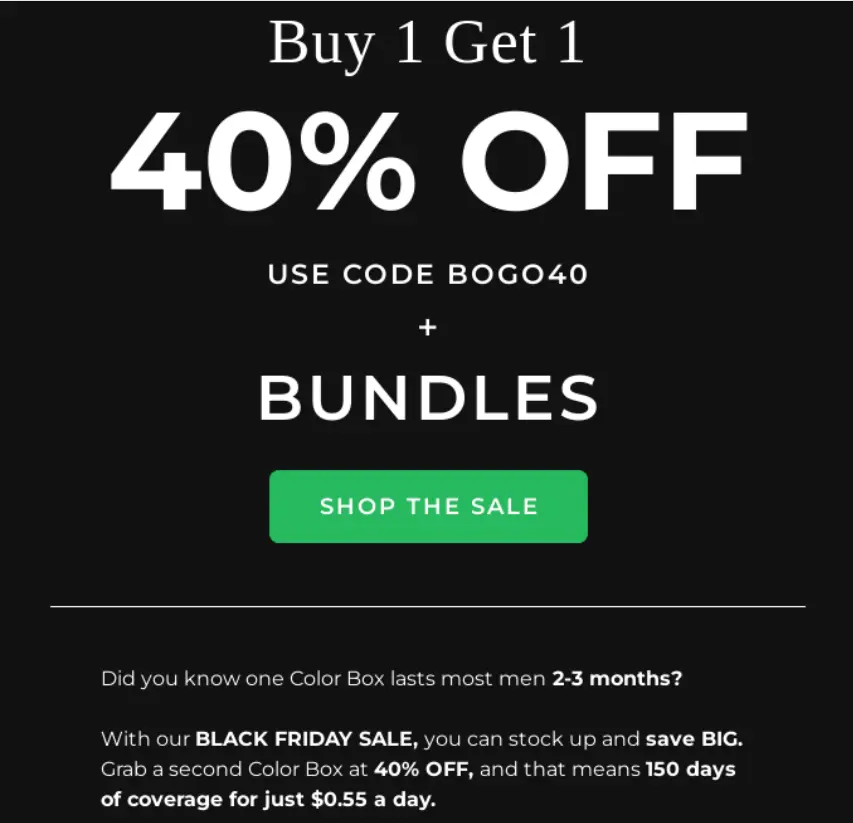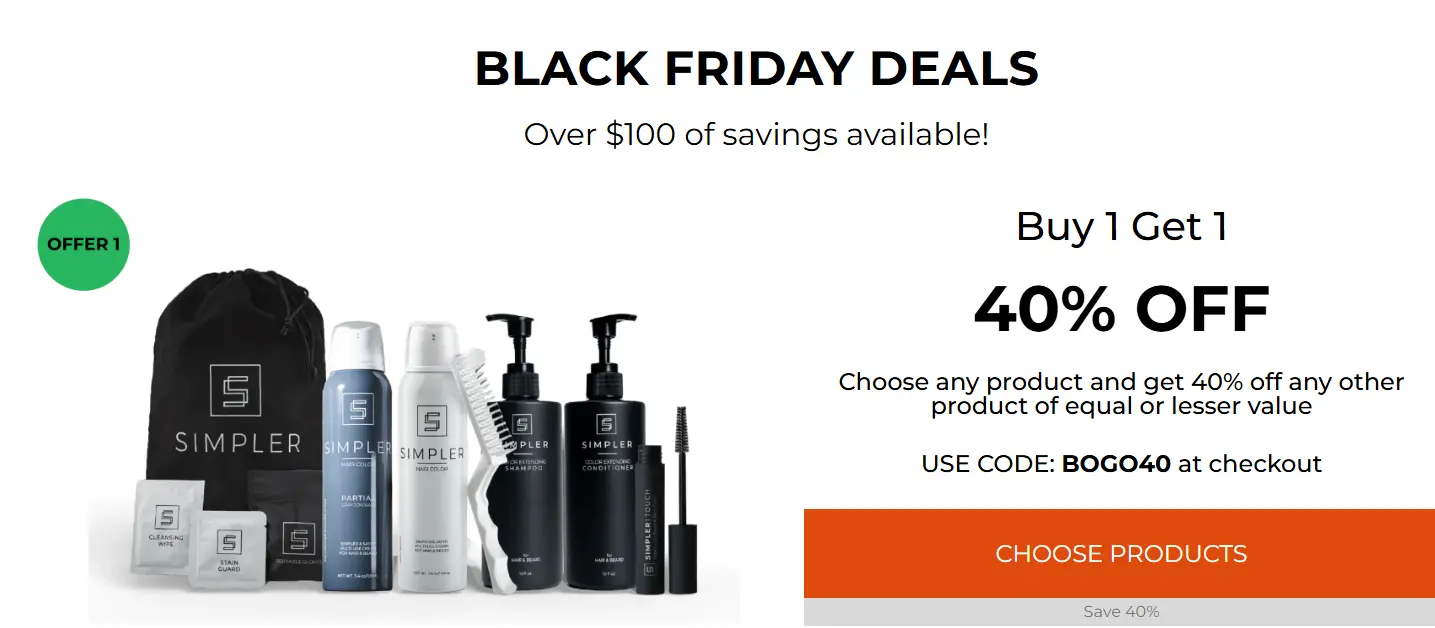Top 10 Game-Changing Black Friday Advertising Ideas in 2025
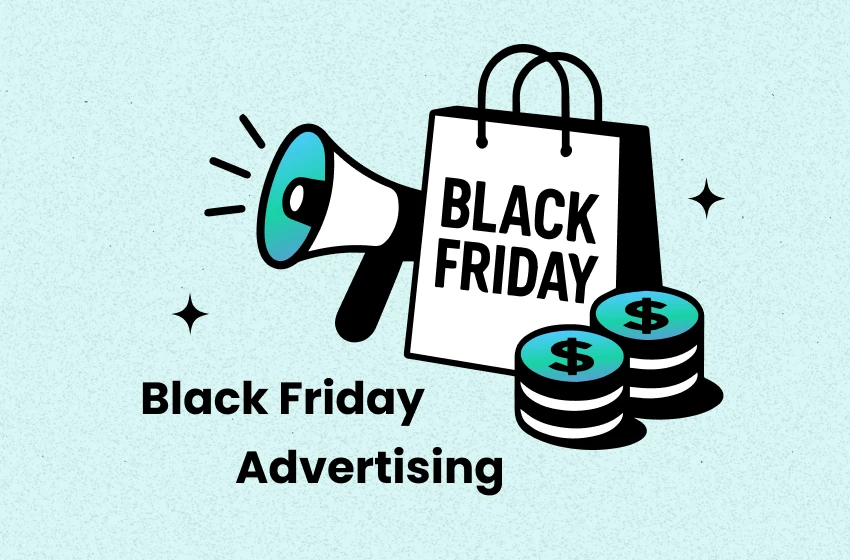
A successful Black Friday advertising strategy can make or break your holiday sales. From teasing early deals to running high-converting ads across multiple channels, your campaign needs to stand out in the busiest shopping season of the year.
Here are some proven Black Friday campaigns for 2025 that show how top brands are winning shoppers’ attention and driving massive sales.
1. GymShark’s SiteWide Influencer Campaign
On its Black Friday biggest sale, Gymshark launched a massive 70%-off sitewide event and partnered with well-known fitness creators like Kelsie Faith Thomas to reach gym enthusiasts on Instagram and TikTok.
Each influencer created short-form Reels showing themselves working out or styling Gymshark outfits, while Gymshark gave each influencer a unique affiliate coupon code that offered followers an additional 10% off on top of the 70%-off sale.
This affiliate plus site-wide discount did two things:
- It created exclusivity since followers felt they were getting a special deal directly from their favorite creator.
- It allows performance tracking where Gymshark could clearly see which influencer generated the most conversions.
Most importantly, Gymshart didn’t collaborate with celebrity-level influencers. For them, micro-influencers (those with 10K–50K followers) already drove higher engagement and conversions because their audiences trust them more.
2. Typo’s Perk Member-Only Campaign
The Australian lifestyle brand Typo (part of the Cotton On Group) launched a “members get in early” campaign designed to reward loyal customers and generate buzz before the shopping event officially began.
Here’s how they did it: First, they tease what’s coming by posting on social media.
After launching their sale early on social media, Typo sent a private link via email or SMS to their perk members.
This way, they can select customers — typically loyalty program members, newsletter subscribers, or repeated customers — a head start on deals before they’re released to the public.
3. Detox Market’s Free Gift + Tiered Discount Campaign
Detox Market used both tiered discount and free gift promotion on its email campaign — to encourage higher spending while keeping the brand’s premium image intact.
Their offer structure looks like this: Spend $100 → Get $15 off; Spend $200 → Get $30 off + a free full-size gift; and Spend $400 → Get $80 off. Doing so, Detox Market encourages shoppers to add more items to their cart to reach the next tier.
But they don’t stop on this. By offering a gift from its own catalog, Detox Market also turned the campaign into a subtle product discovery opportunity, allowing customers to try new items and potentially fall in love with them, driving repeat purchases later.
4. Snif’s Give Away Warm-Up Campaign
Before you rush to launch your biggest Black Friday discount, take a look at Snif’s warm-up strategy.
Instead of leading with sales, Snif launched a fun Instagram giveaway where followers only needed to drop an emoji to win a curated “holiday evening” fragrance set.

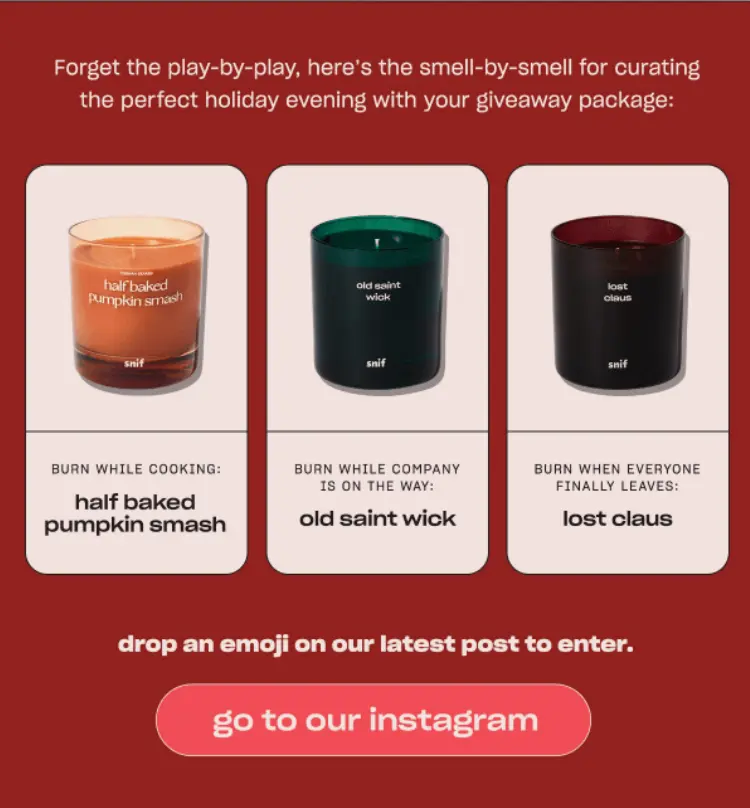
This low-effort entry made it easy for fans to join in, boosting engagement and pushing the post higher in Instagram’s algorithm. By the time the Black Friday sale went live, Snif already had an active, excited audience ready to shop. It’s also the best chance for introducing their latest fall candle collection.
5. Feelunique’s Customized Referral Campaign
On Feelunique’s referral campaign, each customer received a customized message — “Phoebe, tell your friends about our Black Friday event: Up to 33% off plus limited-time deals and free gifts.”

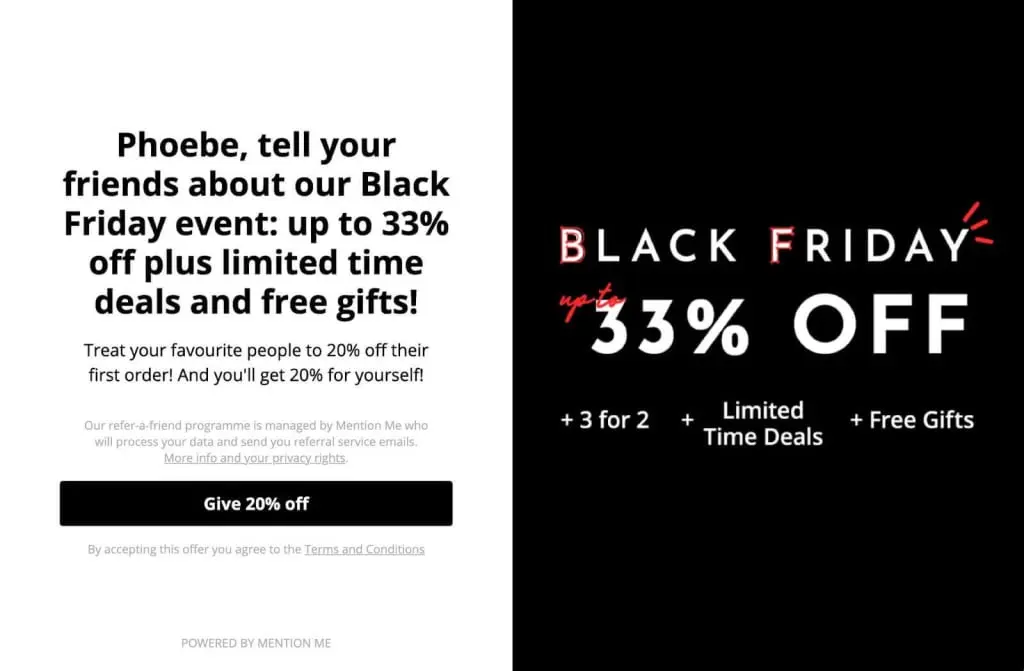
The message invited them to share the joy by giving friends 20% off their first order, while earning 20% off in return. This simple, friendly offer encouraged real conversations and helped Feelunique expand its audience organically right before the biggest sale of the year.
6. Midnight Paloma’s Gift Guide Campaign
The goal is to remind Midnight’s customers of their “25% Exclusive Black Friday” deal, but on D-day where every inbox’s flooded with promotion, coupon code, free gift, how to stand out and get attention? This Midnight email campaign proved that sometimes, less really is more.
Instead of fancy visuals or long product lists, Midnight sent a simple, text-only message that felt like a note from a friend reminding you to check out their holiday gift guide. Then, the brand subtly introduced its product range before mentioning the 25% off discount that ended at midnight.
The focus on a holiday gift guide gave readers real value, and the midnight deadline added just enough urgency to inspire quick action.
7. Deciem’s Extended Sale Campaign
Deciem, the company owns well-known skincare brands like The Ordinary, NIOD, and Hylamide, decided to pause all online and in-store sales on Black Friday itself, promoting what they called a “moment of nothingness.” Instead of the usual urgency-driven, buy-now messaging, Deciem encouraged shoppers to slow down, shop mindfully, and make more considered purchases.
However, while the brand closed its checkout for a day, it had already rolled out a month-long 23% discount across all products throughout November. This meant they exchanged one-day impulsive sales for consistent orders afterward.
8. & Other Stories’ Pre-Order Campaign
& Other Stories’ Pre-order campaign is a clever example of how to guide customers into a ready-to-buy mindset before Black Friday even begins.
Ahead of its 2024 Black Friday sale, the brand invited shoppers to “Pre-select your shopping bag now — find your favorites.” This way, the brand allowed customers to explore the catalog early, save their must-have items, and plan their purchases before the sale started.
Then, on Black Friday itself, & Other Stories followed up with a second message: “20% off everything today.” Shoppers had already spent time curating their shopping bags, so when the sale dropped, they could check out immediately without hesitation.
9. Backcountry’s 10 Daily Deals Campaign
Backcountry launched its Black Friday sale 10 days early, positioning it as an extended celebration for both snow season and shopping season.
Each day featured a new, themed deal, such as “Day 1: Hoodies & Fleece starting at $25", so customers were motivated to return daily to see what would drop next.
As the 10 days unfolded, Backcountry revealed more categories and deeper discounts. This approach allowed the brand to capture early shoppers while building anticipation for the final, biggest sale.
10. Simpler Hair’s BOGO Multichannel Campaign
Simpler Hair promoted its BOGO and discounted coupon across multiple channels, including Meta ads, email marketing, and a dedicated landing page.
Facebook ads captured attention with short, punchy visuals and direct CTAs “Shop the BOGO Sale Now”.
Email campaigns provided more context, explaining the offer details and linking directly to the landing page.
Meanwhile, the landing page focused solely on the promotion with clear examples of product pairings and an easy path to purchase.
Together, they made it easy for customers to recognize and act on the offer, no matter where they saw it.
How to Measure Advertising Performance?
1. Define Black Friday Goal
To define the goal, start by identifying what success means for your brand during Black Friday—is it driving true profitability, attracting new customers, increasing repeat purchases, or clearing old inventory? Once your main objective is set, connect it to specific metrics across each stage of the marketing funnel to track performance accurately.
2. Review the Budget
Without a clear understanding of your budget, it’s easy to overspend on low-performing channels or underfund strategies that could generate the most profit. That’s why reviewing the budget is a critical step that ensures your spending aligns with your goals.
The process begins by estimating the budget for all marketing activities, including paid ads, email campaigns, social media promotions, content creation, influencer partnerships, and any platform or software costs. You should also consider operational expenses, such as fulfillment, customer service, and website maintenance, which can spike during high-traffic periods like Black Friday.
3. Identify Key Performance Metrics
Once you’ve reviewed your marketing budget and defined company objectives, you must identify relevant metrics to assess your marketing performance—also known as key performance indicators (KPIs).
Key performance metrics should include the end result like net profit and intermediate metrics like views, click through rate, conversion rate, etc to understand where consumers might be getting stuck in the marketing funnel.
On Awareness, metrics here will measure your campaign visibility:
- Impressions: How many times your ad or content appears in front of users.
- Reach: The number of unique users who saw your campaign.
For Consideration, the next step is to measure interest and engagement—whether your campaigns motivate users to learn more or explore your offers.
- Click-through rate (CTR): The percentage of impressions that turn into clicks, showing how engaging your message or creative is. If your CTR is below 2%, you might want to think about dropping it. If it’s between 2-3%, there’s room to boost it, and hitting 4-5% is spot-on.
- Cost per click (CPC): The cost of each click, helping assess how efficiently your ad spend drives traffic.
- Add-to-cart rate: The percentage of visitors who add products to their cart—a strong indicator of purchase intent. A solid rate is 6-7%, and anything over 8% is really good.
Conversion is where intent turns into action. Conversion KPIs measure how effectively your campaigns generate profit and drive ROI. Key KPIs include:
- Customer acquisition cost (CAC): The total cost to acquire a new customer, including ads, promotions, and other marketing expenses.
- Return on investment (ROI): The overall profit gained from marketing efforts compared to the amount spent.
- Net profit on ad spend: The actual profit left after deducting all advertising and operational costs, offering a true picture of profitability.
- Net profit: The key bottom line after all cost deducted from sales. It helps reveal the most accurate performance of your Black Friday Campaign
- Net profit margin: The profitability ratio reflects your store’s ability to generate net profit compared to the amount spent.
By tracking a mix of awareness, engagement, and conversion KPIs, you can pinpoint which Black Friday marketing tactics drive the most value.
4. Choose an Attribution Model
Attribution is the process of linking marketing touchpoints to customer acquisitions, providing insight into how different campaigns, ads, or channels influence buying decisions. Remember, each model will track the customer journey differently and can impact how you assess the success of your marketing spend.
First-click model attributes 100% of the sale to the very first ad or touchpoint a customer encountered. In contrast, the last-click model assigns 100% of the sale to the last ad or interaction before conversion.
Others include the linear model—distributes credit equally across all interactions; Time decay—only attributes to the touchpoints down of the funnel, and U-Shaped—combines the first and last click model.
You can select the right attribution model depending on your campaign objectives and customer journey complexity. For example, a long awareness-building campaign may benefit from first interaction or position-based attribution, while a short-term Black Friday flash sale may be better evaluated using last interaction or time decay models.
Stay on Top of Your Black Friday Profitability
Black Friday can be a golden time for eCommerce sellers, with high traffic, fast-moving sales, and multiple campaigns running at once. Yet, without a clear picture of your actual profits, it’s easy to chase revenue while losing track of costs—and that’s where staying on top of profitability becomes critical.
TrueProfit, the #1 Shopify net profit analytics app, takes the guesswork out of BFCM profitability. TrueProfit automatically calculates your real net profit by factoring in every cost—COGS, ad spend, shipping, and fulfillment—so you always know what’s truly paying off. Instead of reacting blindly to sales spikes or ad shifts, you can make confident, data-backed decisions that protect your profit even in the most fast-paced, high-stakes shopping event of the year.

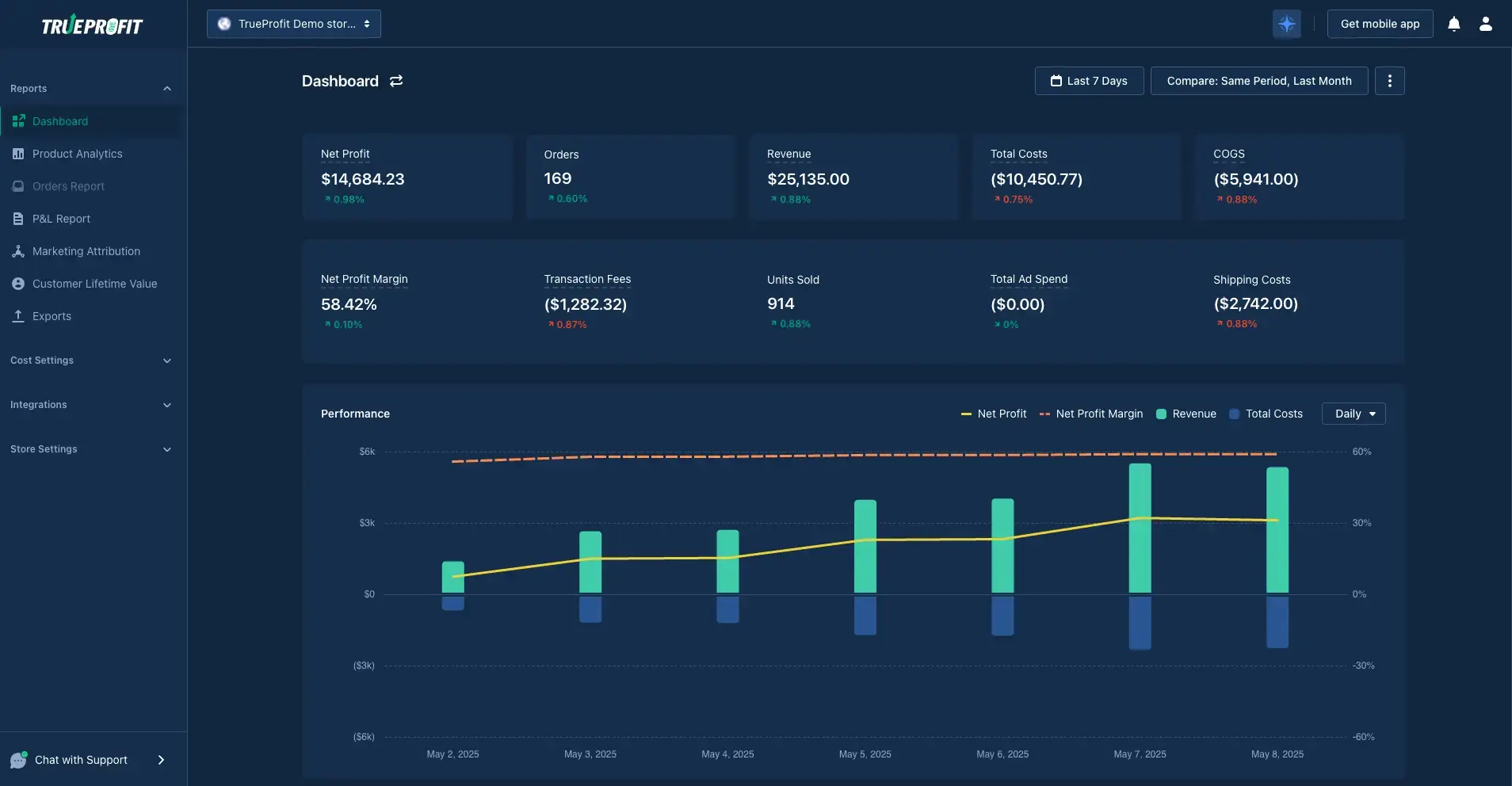
Here’s how to stay on top of your profitability during Black Friday with TrueProfit app:
- Track key financial metrics, including net profit, net profit margins, product costs, ad spend, shipping fees, and more in real-time.
- Compare performance over time via P&L reports, spotting the peak profit and slowdown.
- Identify and scale profitable products so you can focus on promoting items that truly boost profit during the sale.
- Measure ad performance accurately based on its true contribution to net profit across all channels.
- Monitor overall profitability across multi-stores in one single dashboard.
By keeping a constant eye on profit & loss alongside other essential performance metrics, TrueProfit equips you with the insights to run smarter campaigns, scale winning products, and maximize profitability during Black Friday—turning a chaotic shopping day into a well-controlled, profitable event.
Lila Le is the Marketing Manager at TrueProfit, with a deep understanding of the Shopify ecosystem and a proven track record in dropshipping. She combines hands-on selling experience with marketing expertise to help Shopify merchants scale smarter—through clear positioning, profit-first strategies, and high-converting campaigns.

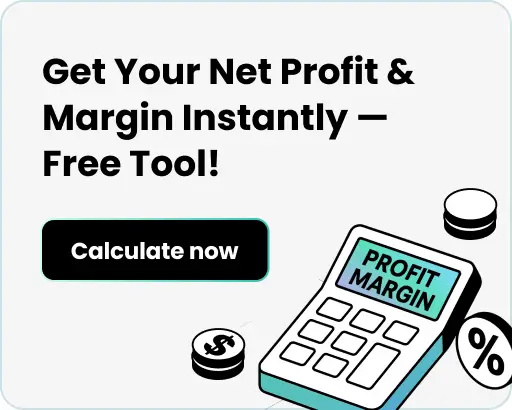
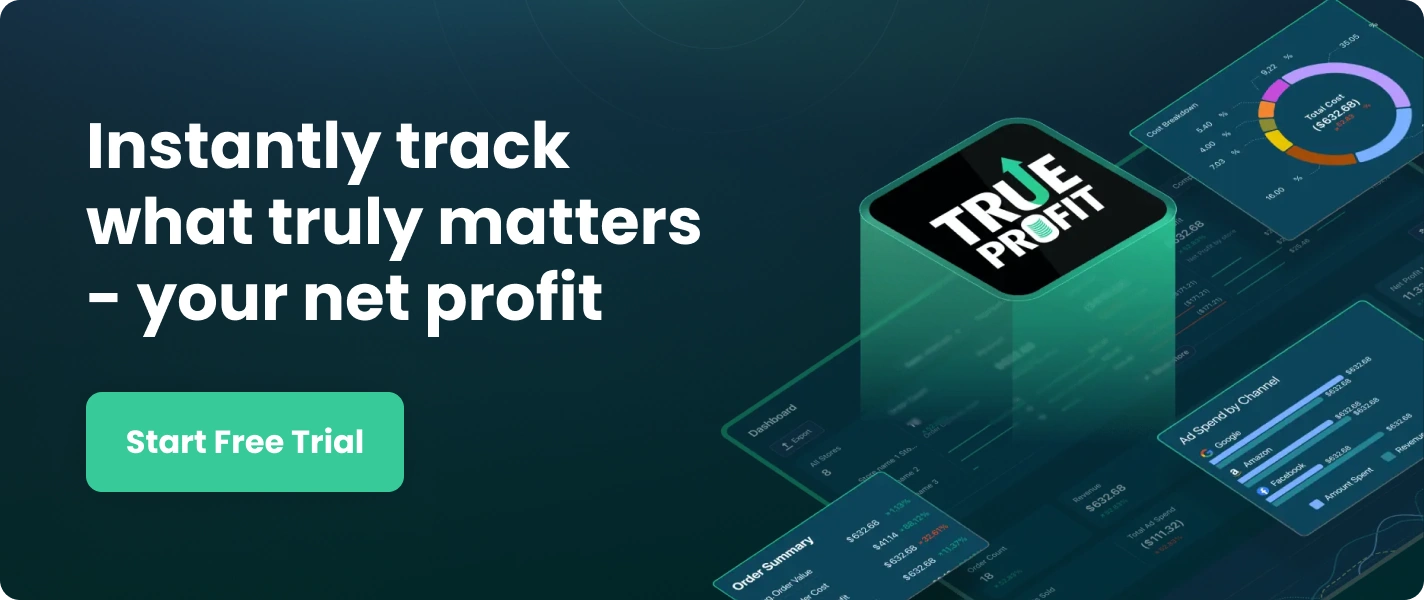

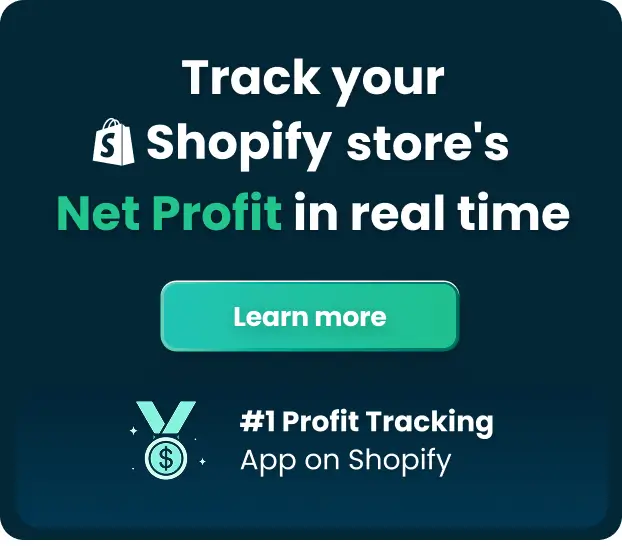
 Shopify profits
Shopify profits